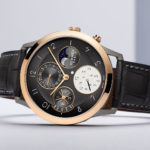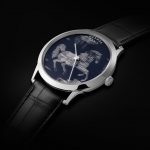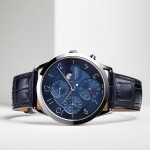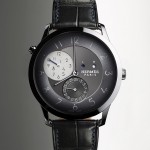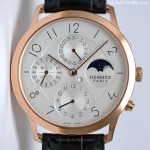Review: Hermès Slim d’Hermès Quantième Perpétuel Titanium
Elegant, lightweight, and quirkly detailed.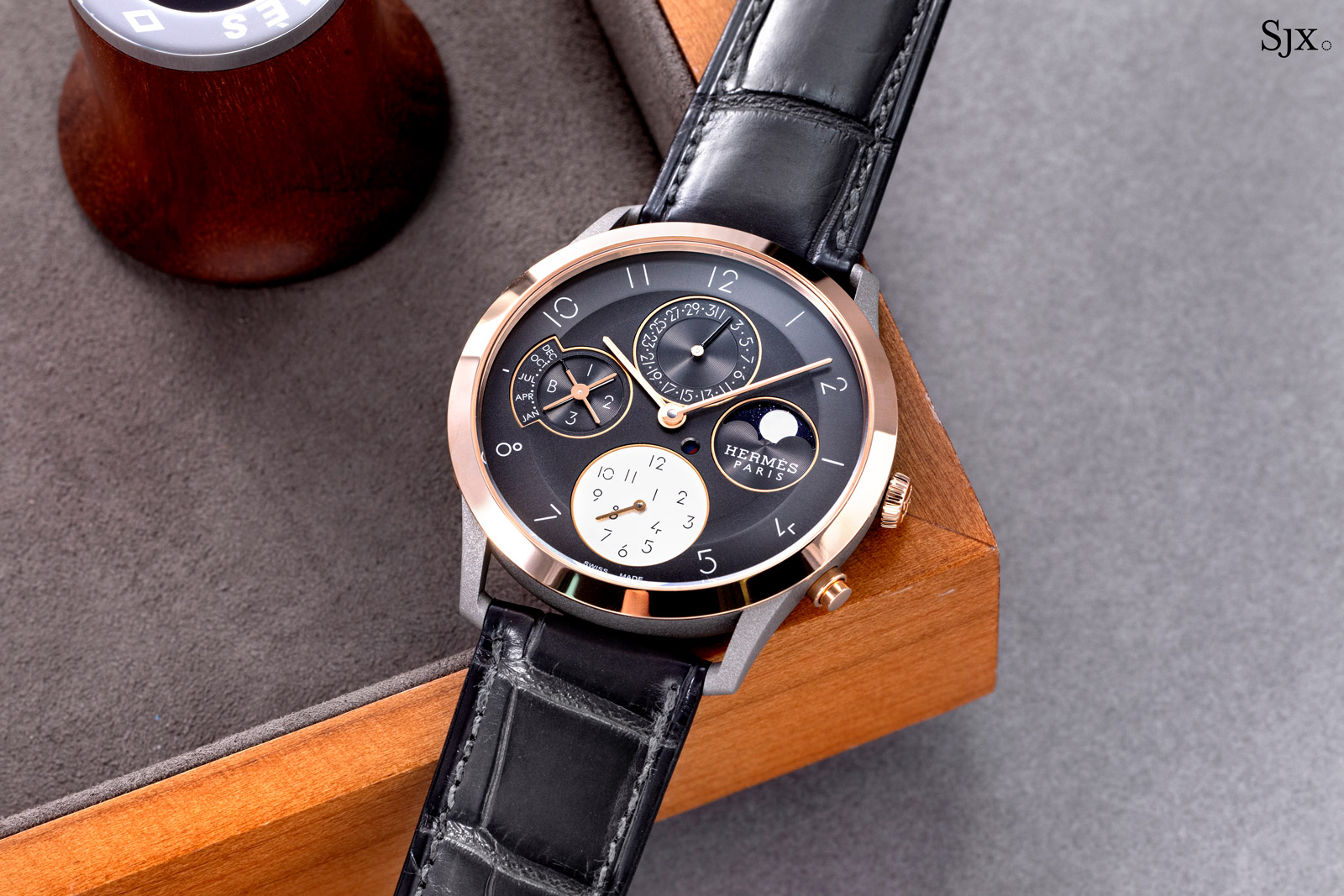
Defined by its custom-design typography and restrained styling, the Slim d’Hermès is Hermès’ signature gentlemen’s watch. Though the time-only model is the best known, the collection also includes complications, including the recently face-lifted Slim d’Hermès Quantième Perpétuel in titanium.
Originally available only in precious metals, the perpetual calendar now has a titanium case – but with precious metal accents – along with a gently redesigned dial. While the changes to the dial are modest, they add a degree of offbeat style that is characteristic of Hermès.
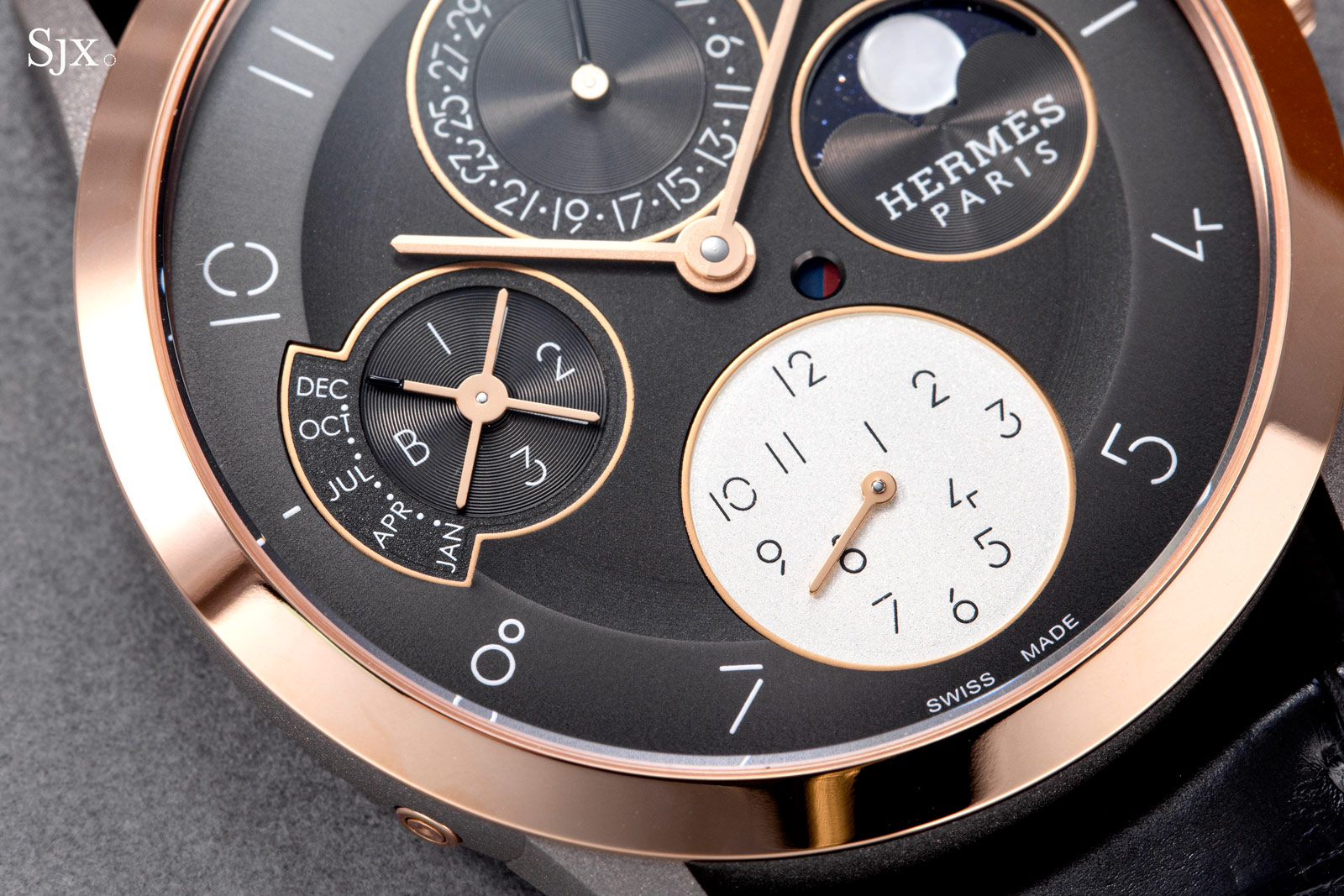
The second time zone display at six o’clock with its seemingly jumbled numerals
Key takeaways
- Elegant and restrained in both design and feel, the watch is simple on its face but made interesting with quirky details like the jumbled second time zone display.
- The design stands out from comparable perpetual calendars without being excessive.
- The case is slim and proportioned just right, while the frosted finish contrasts well with the polished gold components.
- The Vaucher-derived movement is high quality in both construction and finish, albeit in an industrial style, though the “H” monogram decor is not for everyone, while the second time zone function has limited utility.
- Much of the qualities of the watch reflect Hermes’ vertical integration of the production process, which includes dial and case making.
Initial thoughts
At a glance the Slim d’Hermès Quantième Perpétuel looks like an ordinary perpetual calendar with a round case and four registers on the dial. But zoom in and the details emerge, revealing it to be an elegantly designed watch. In fact, it is arguably better designed than perpetual calendars from many mainstream watch brands, perhaps because Hermès is primarily a house of style.
For one, it has the clean typography designed specifically for the Slim d’Hermès collection. But more interesting is the second time zone display at six, a tangle of numbers that adds whimsy to the design. The month and leap year indicators, on the other hand, are cleverly combined into display.
Even though some elements of the dial are unusual, legibility remains good. In fact, the second time zone is surprisingly easy to read. However, it’s worth noting the second time zone has limited functionality since the main set of hands is linked to the calendar (I explain this in detail below). Still, the design of the second time zone register is a key element of the design’s restrained whimsy.
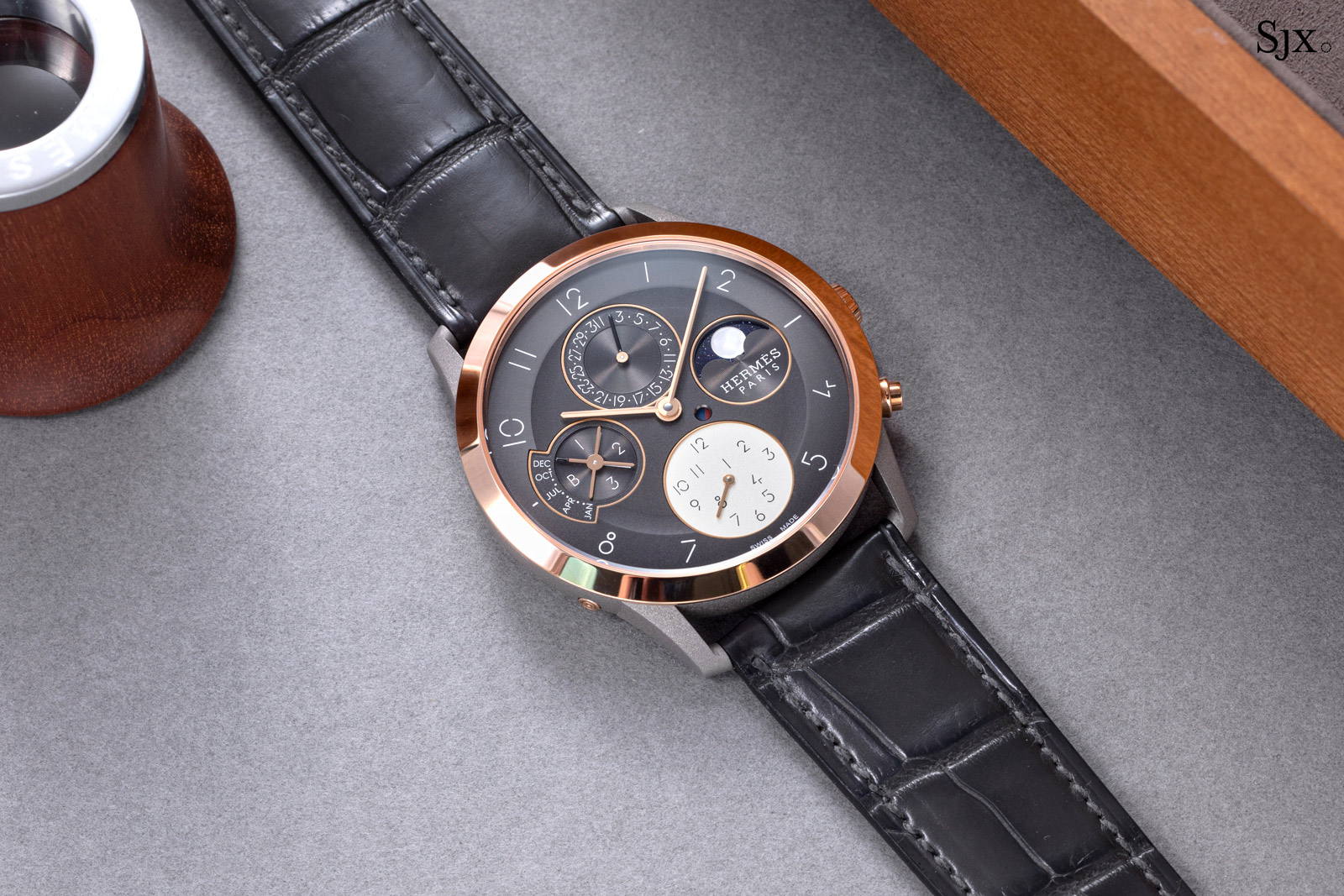
The case is similarly subtle in its details. The heavily frosted titanium case is a perfect match for the gold bits. And the case is very flat, enough it can pass for an extra-thin perpetual calendar.
Hermes is able to do what it does with the various components because it owns much of the supply chain, including dial and case making subsidiaries. The same is true for the movement, but to a lesser degree.
The movement is the work of two respected names: an extra-thin automatic base by Vaucher with a calendar module made by Agenhor, the Geneva-based complications specialist. Hermes owns a quarter of Vaucher, though Agenhor is independent.
It’s a good combination that results in a surprisingly thin case and second time zone feature in addition to the perpetual calendar. On the other hand, the “H” embossing on the bridges might be one “H” too many. Given the prevalence of striping and other conventional decoration, this is more interesting, but is certainly an acquired taste.
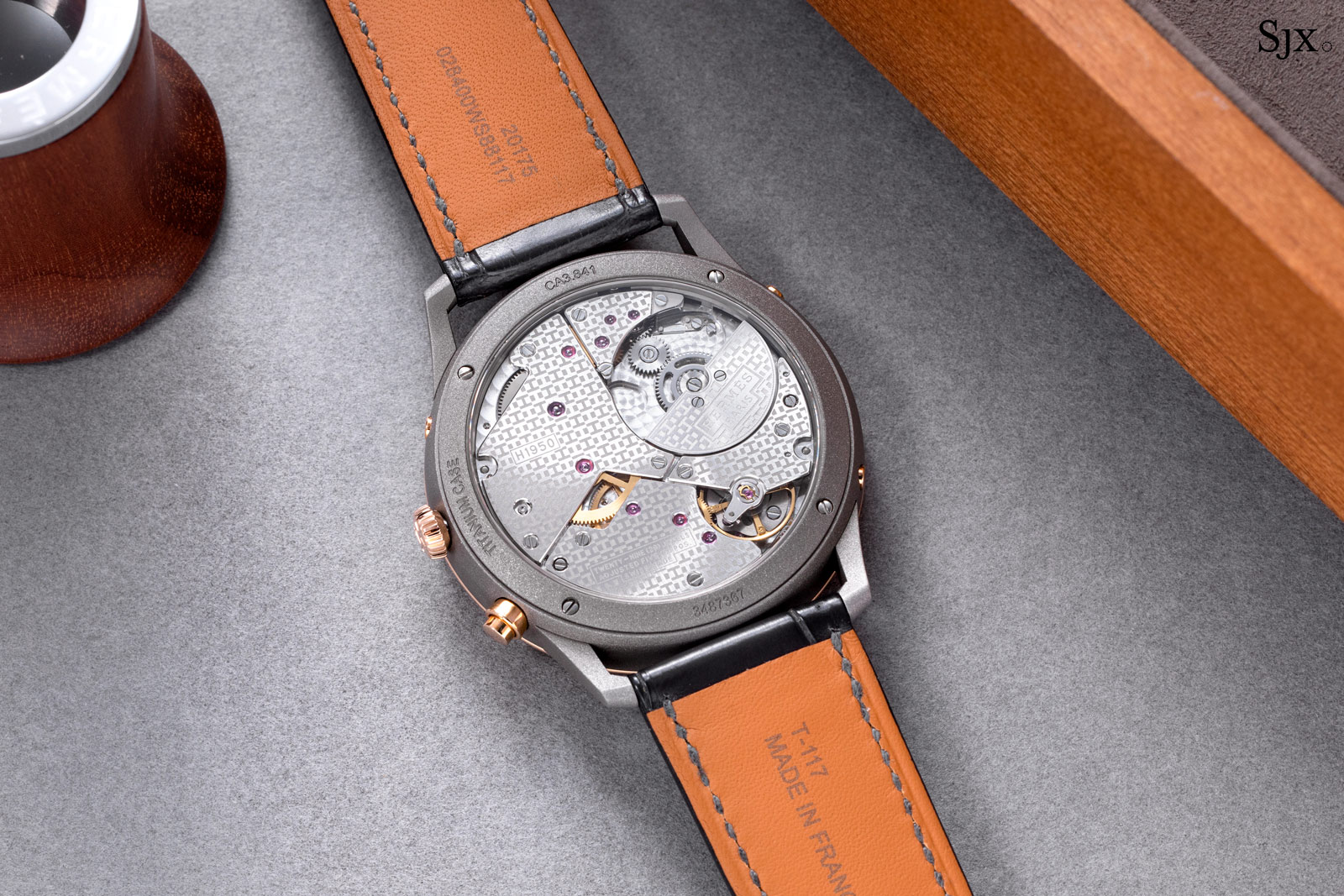
Aside from the version shown above, the model is also available in titanium with a platinum bezel along with the crown and pusher in white gold. This version is almost monochromatic and lacks the lively contrast of its titanium and rose gold sibling, which has just enough colour but not too much.
Both versions are priced the same at just under US$39,000. That’s less than half of what brands like Patek Philippe or Audemars Piguet charge for a perpetual calendar, and in the ballpark of IWC, making this a competitively priced option.
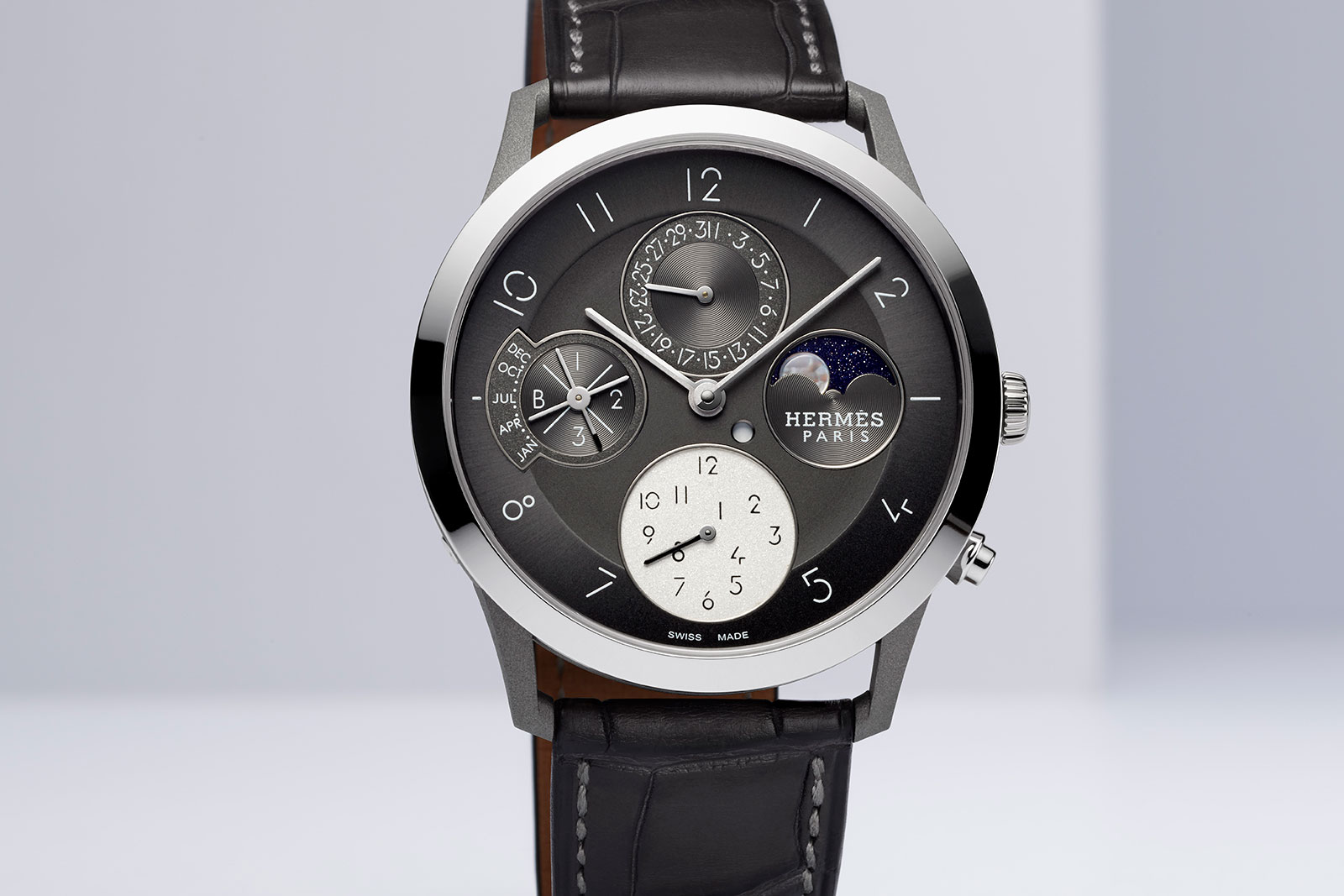
The version in titanium, platinum, and white gold. Image – Hermes
An eye for details
The Quantième Perpétuel is surprisingly thin at about 10 mm high and perfectly proportioned with its 39.5 mm diameter. It’s not too big and not too small, and also a good fit for the movement inside. And on the wrist it feels as elegant as it looks, helped by the lightness of the titanium case.
The details of the case are surprisingly nuanced, notwithstanding the simple outline. First, the juxtaposing surface finishes of heavy, granular frosting on the titanium case middle and mirror polished rose gold. Together they create an appealing contrast that also emphasises the thinness of the case.
On another note, the titanium case is several shades darker than ordinary titanium, even considering the frosted finish, so it is likely that it’s coated with DLC or similar, though Hermes does not specify this in the specs.
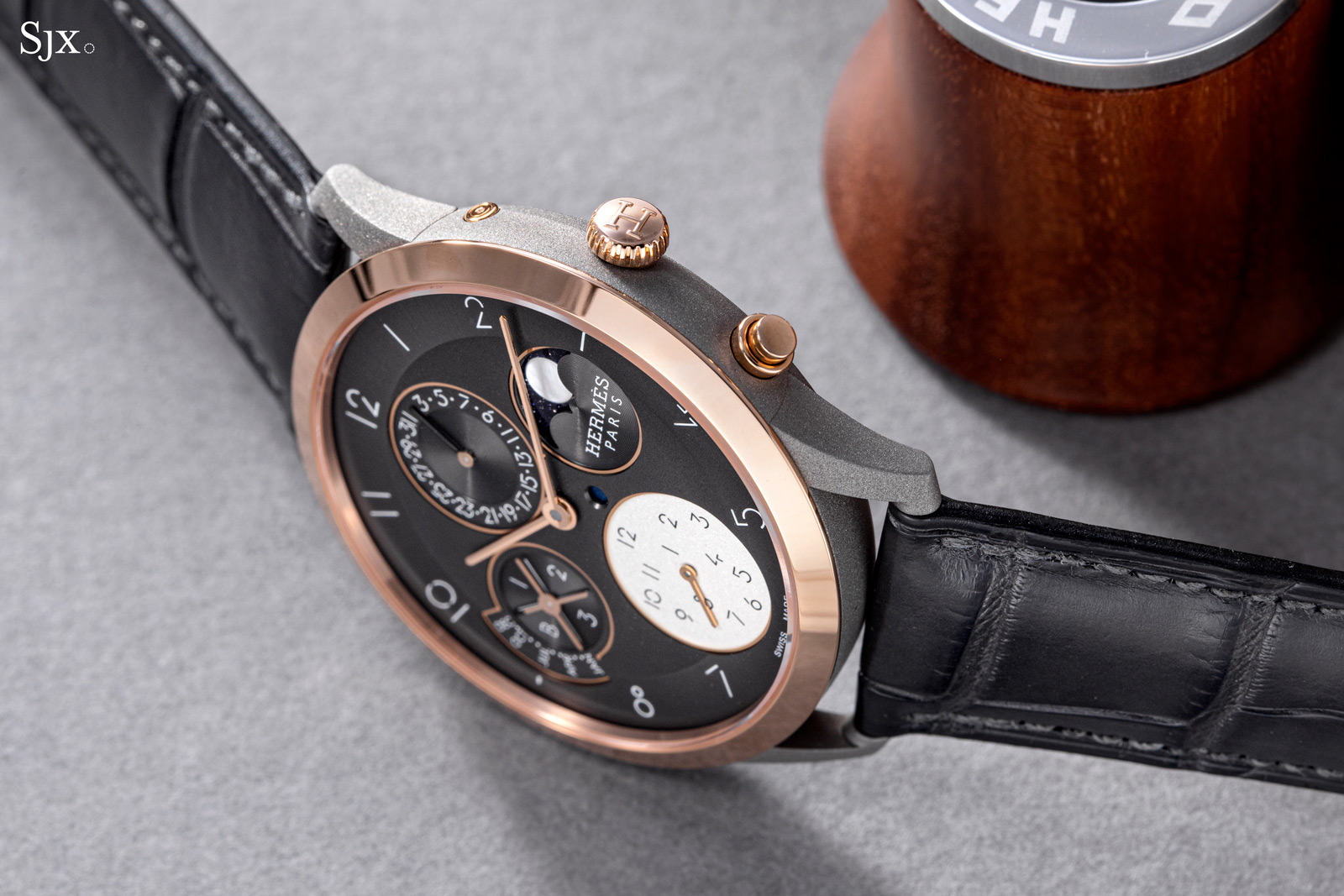
In fact, the case feels a little smaller than expected, thanks in part to the short lugs. The lugs, for instance, resemble wire lugs but are conventional lugs that accommodate spring bars. However, they serve to give the watch a more classical feel while enhancing the simplicity of the design. And up close the gently convex case sides are apparent; this also accentuates the slimness of the case.
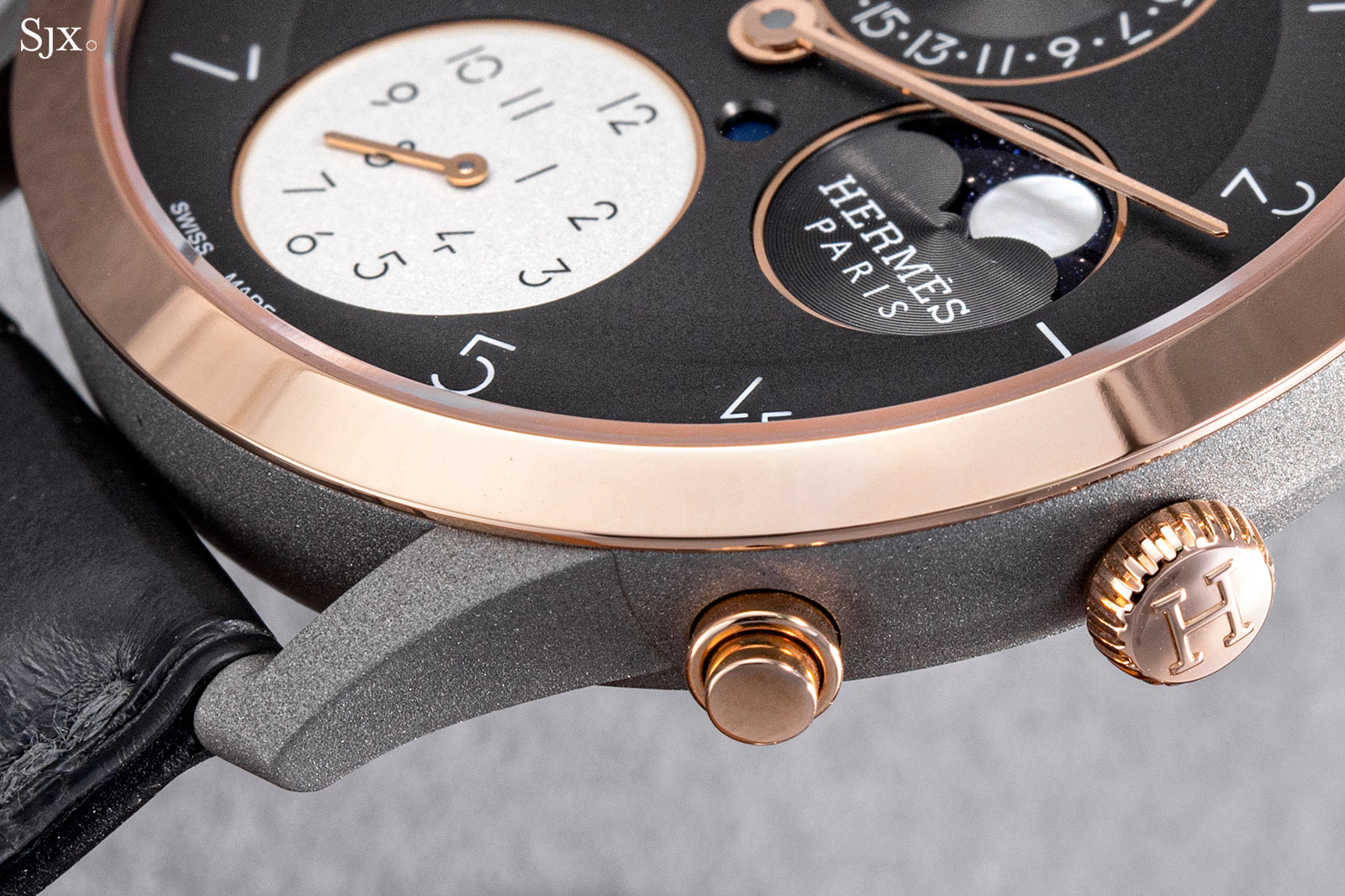
The dial is beautifully detailed, though that is only evident up close. While most of the dial is a single colour, grey, it is finished with a range of treatments, resulting in a multi-tone appearance. The chapter ring for the hours, for instance, is radially brushed, while the scales on the registers are frosted.
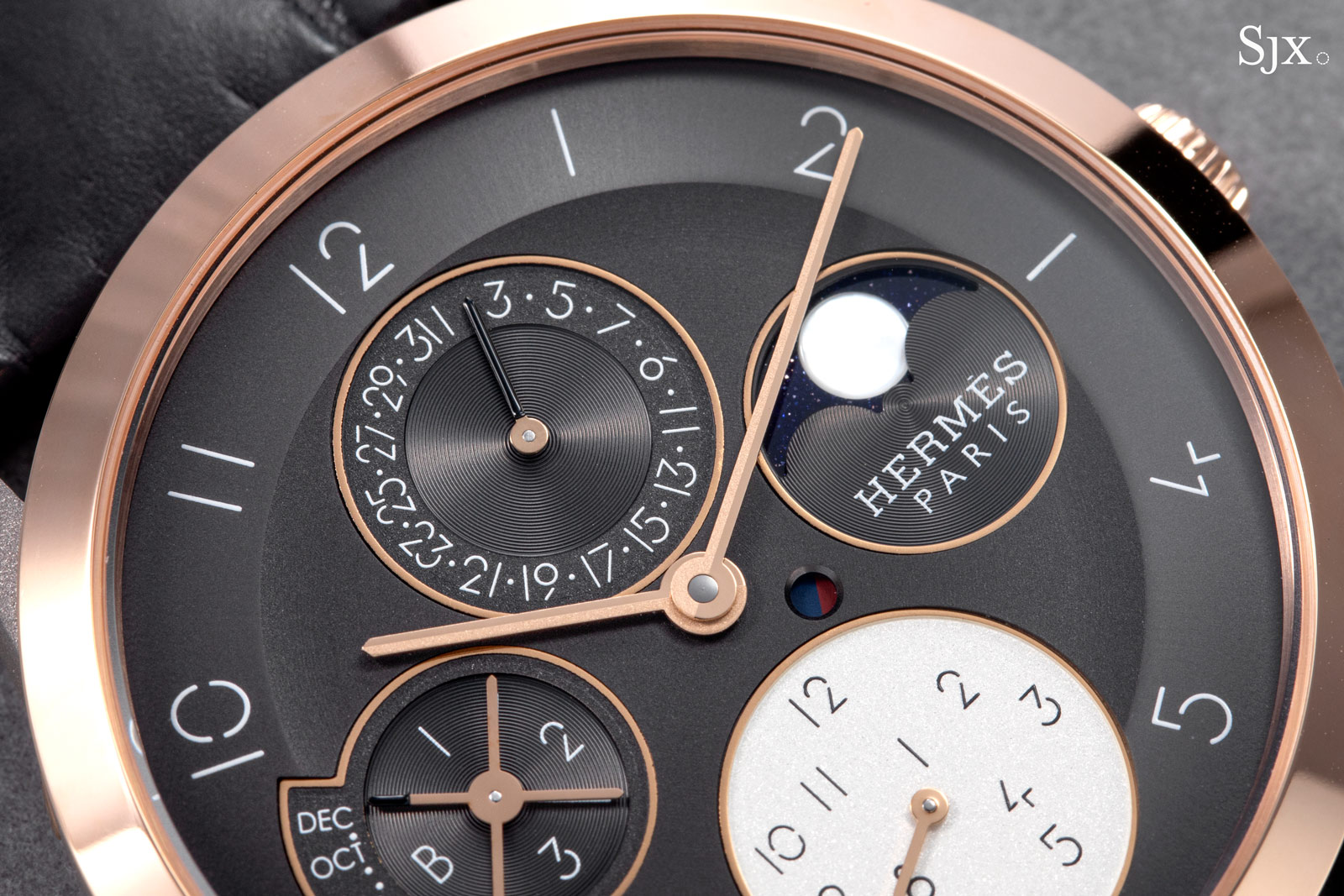
Each register is ringed in rose gold to echo the bezel
And then there’s the moon phase that is especially fancy: an aventurine-glass disc representing the night sky with a mother-of-pearl disc for the moon.
Leaving aside the finishing, the dial is also unusual in terms of the design of the month and second time zone indications.
The second time zone has the hour numerals seemingly arranged at random, but they are actually sequentially arranged clockwise, with each number located at a different distance from the centre. So the second time zone can be read as normal, but the design is a detail that adds character to an otherwise formal watch.
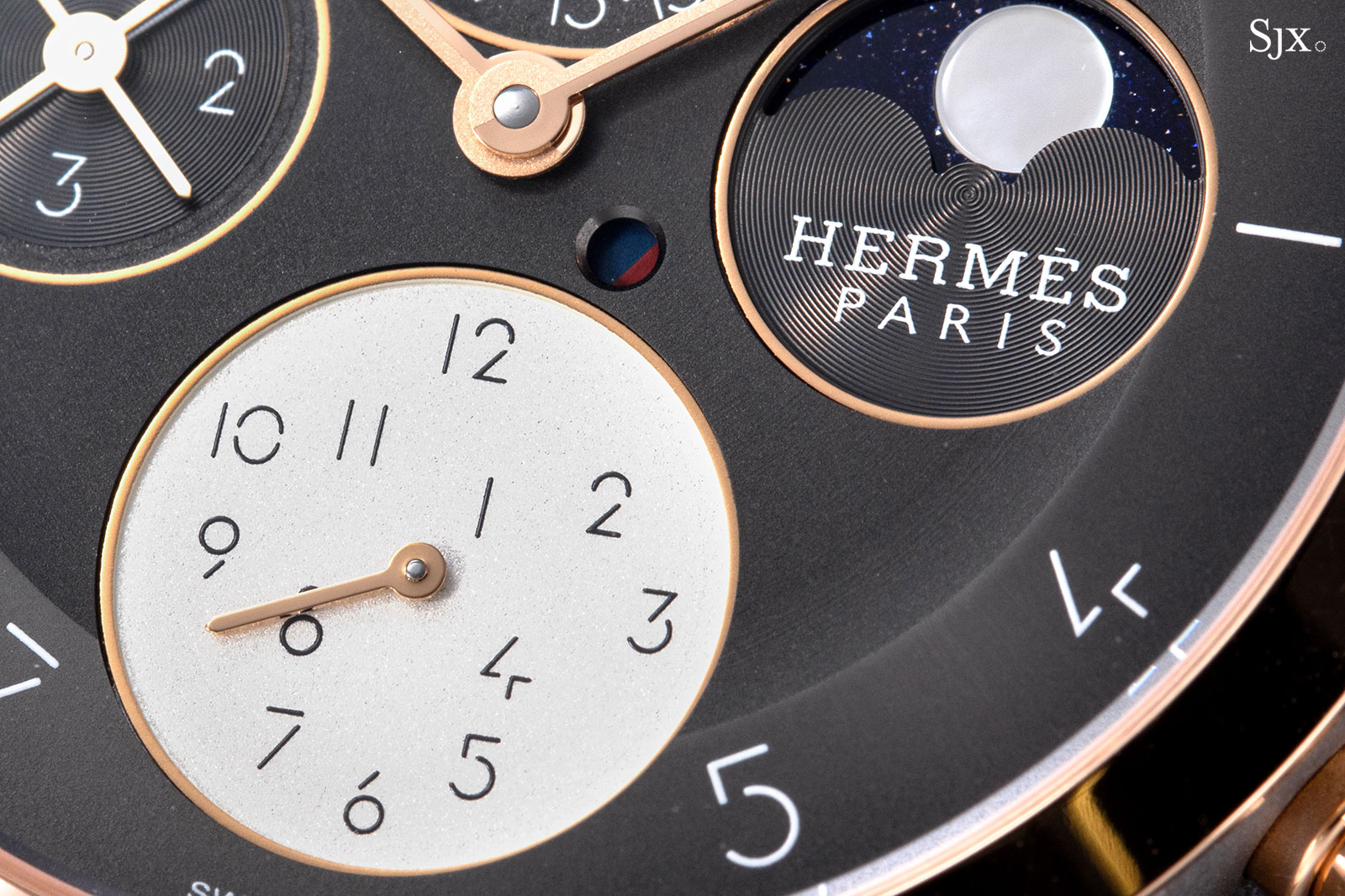
The register for the second time zone is finished with a faintly mottled effect that resembles mineral stone up close
Equally clever is the months indicator that is combined with the leap year display. The black-tipped pointer on the four-armed hand points to the leap year, while the pointer closest to the months scale indicates the current month. Reading it takes some getting used to, but the register makes the calendar a little bit more interesting visually.
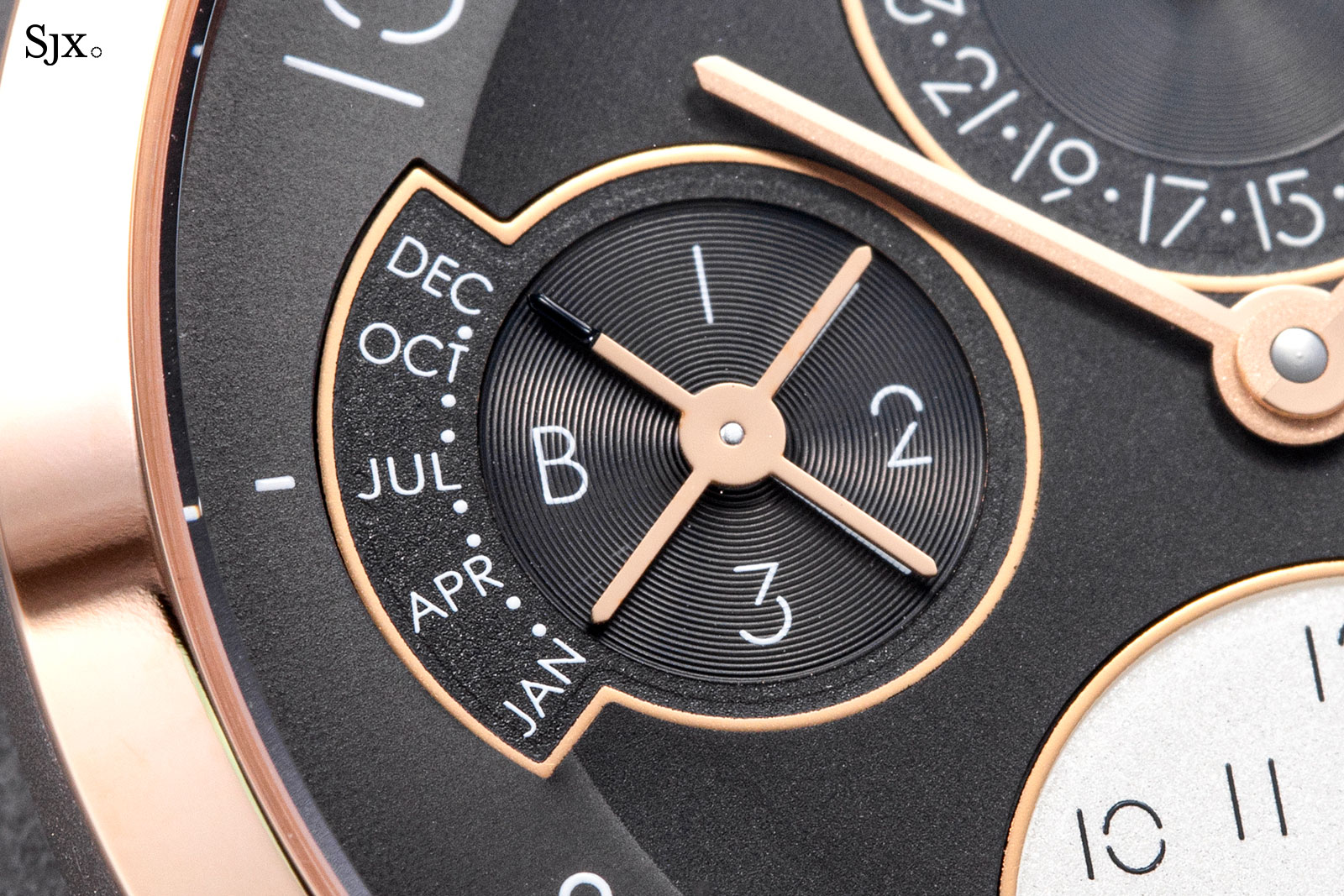
Double complications
The Quantième Perpétuel is powered by the H1950. It’s a variant of the Vaucher VMF5401 customised for Hermès, which owns a quarter stake in the movement maker (with the rest owned by Parmigiani’s parent company). The same calibre can be found in Parmigiani’s watches but with more conventional finishing, and also in some Richard Mille models in the usual black-and-grey decor.
It’s a very thin movement that’s just 2.6 mm high, about a third slimmer than the ETA 2892. Even with the perpetual calendar module on top, the movement measures just 4 mm high in its entirety.
The thinness is due in part to the relatively large diameter of the movement, which makes it perfect for the 39.5 mm case. Another reason for the thinness is the micro-rotor.
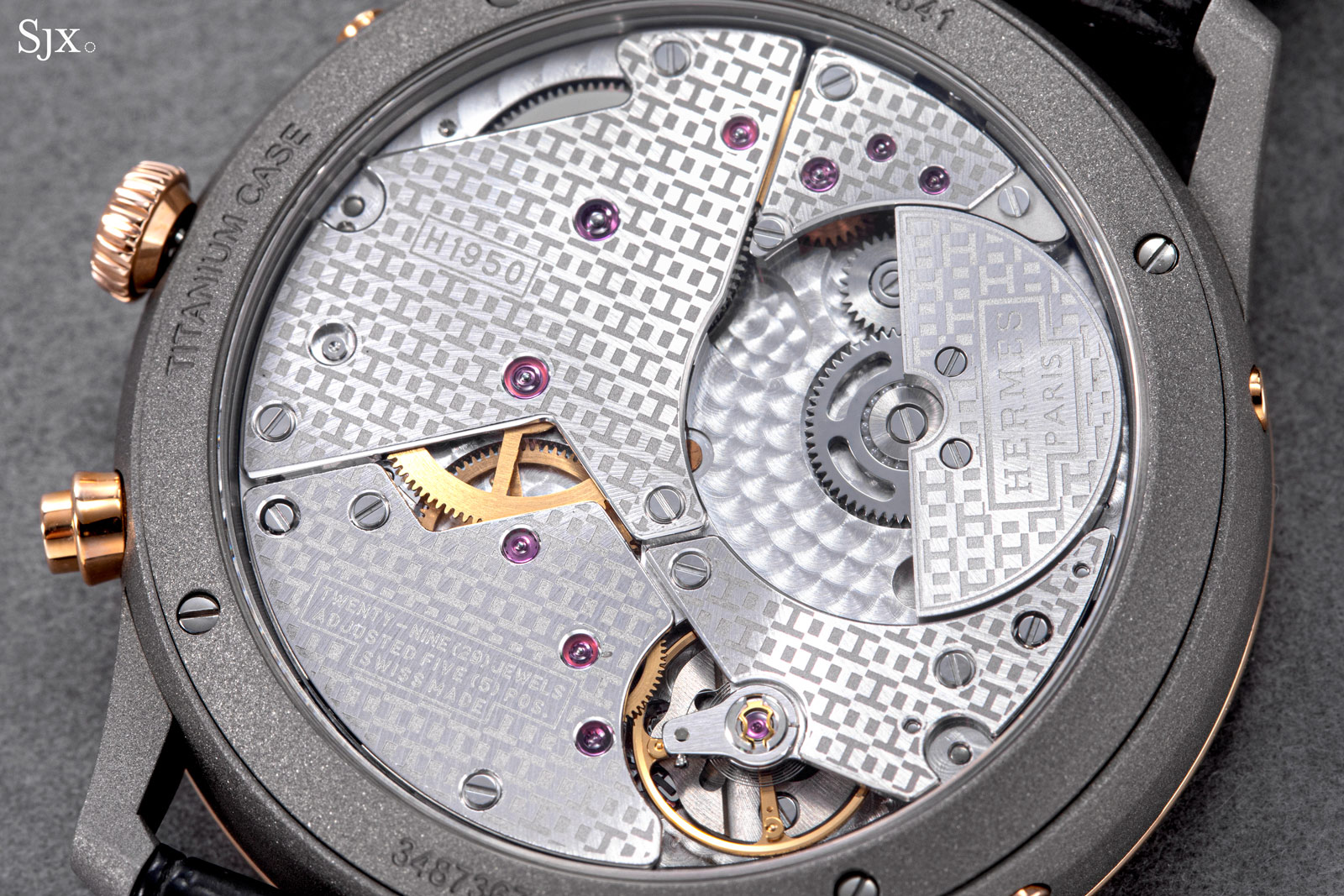
Visually, however, the micro-rotor doesn’t stand out as much as in other similarly-equipped movements because of the single-colour finish. All of the bridges as well as the rotor are finished in the stamped “H” monogram and rhodium plating, while the bridges are also large and closely spaced. Consequently, there’s little visual contrast in the movement, except for a few gilded parts that are visible.
I would have preferred a bit more colour in the movement, but the monochromatic finish matches the restrained aesthetics on the front as it is. While I would give it more colour, I would also keep the “H” monogram simply because it’s an appealing finish that fits the style of the watch.
Even though the movement looks plain at a distance due to the lack of colour, it passes muster up close. The decoration is industrial but clean and thorough. The bridges are bevelled, countersinks are polished, and even the wheels have narrow bevels on their spokes. It is comparable to what you might find in a Jaeger-LeCoultre or Piaget for instance.
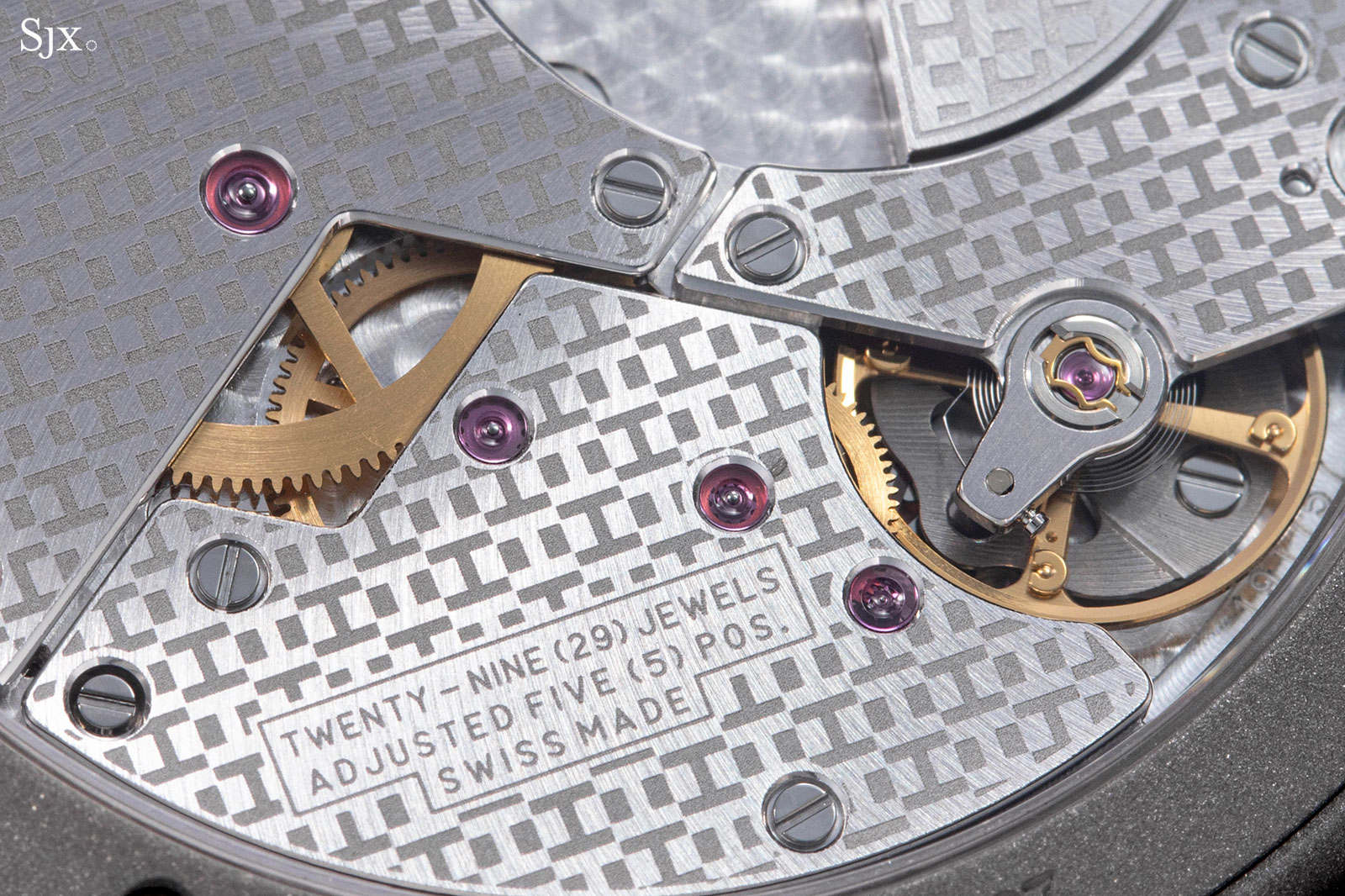
The calendar module on the front is made by Agenhor, the Geneva workshop that makes both complications modules as well as entire movements. It’s a straightforward perpetual calendar with moon phase that’s set up by pushers in the case, like most other perpetual calendars on the market. The calendar could be made better with a more convenient setting mechanism (backwards and forwards adjustment for instance), but it’s good enough all things considered.
It does, however, get a bonus function of a second time zone display. Originally found in the Slim d’Hermes GMT, the second time zone is a basic mechanism that can be advanced in one-hour steps by the pusher at four. It’s easy to use but limited in utility because it is an add-on to the calendar mechanism, rather than being designed from scratch as a dual time zone.
The hour and minute hands are connected to the calendar, so the calendar advances when the hands cross 12 midnight. And the calendar can only be set forwards, via the smaller, recessed pushers in the case.
As a result, the set up is not practical for travelling. Changing the time on the main hands when crossing time zones will result in a corresponding change in the calendar, which is not ideal since it would need to be adjusted once again when back home. So the second time zone is more useful as a means to keep track of the time in another location while at home, leaving the calendar unchanged.
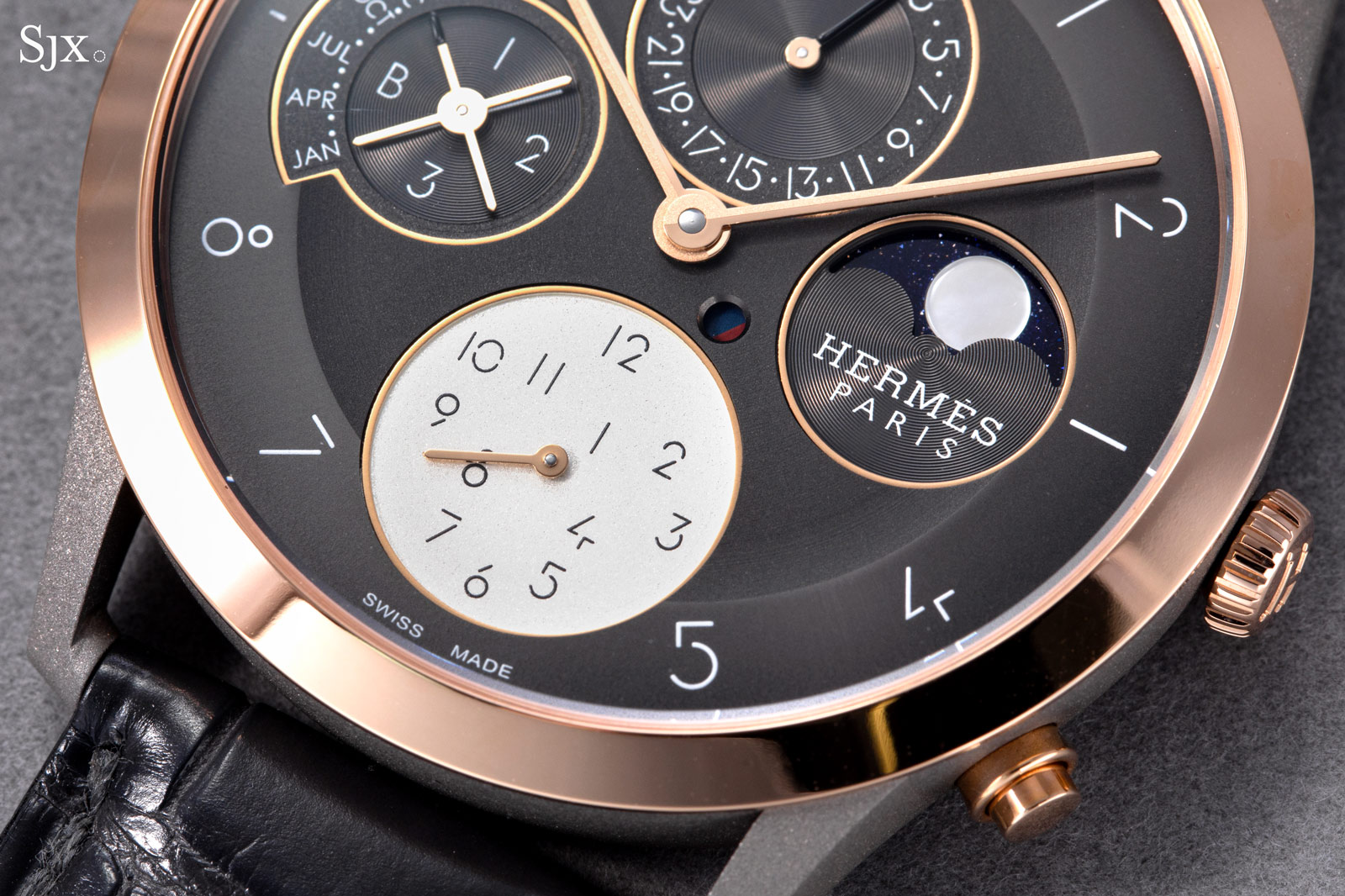
Key facts and price
Hermès Slim d’Hermès Quantième Perpétuel
Ref. W053255WW00 (Titanium with platinum bezel, with crown and pusher in white gold)
Ref. W053254WW00 (Titanium with bezel, crown, and pusher in rose gold)
Diameter: 39.5 mm
Height: Unavailable
Material: Titanium and gold or platinum
Water resistance: 30 m
Movement: H1950 with Agenhor perpetual calendar module
Functions: Hours, minutes, second time zone, and perpetual calendar
Frequency: 21,600 beats per hour (3 Hz)
Winding: Automatic
Power reserve: 42 hours
Strap: Alligator with pin buckle
Availability: At Hermes boutiques
Price: US$38,925; or 58,930 Singapore dollars
For more, visit Hermes.com.
Back to top.

